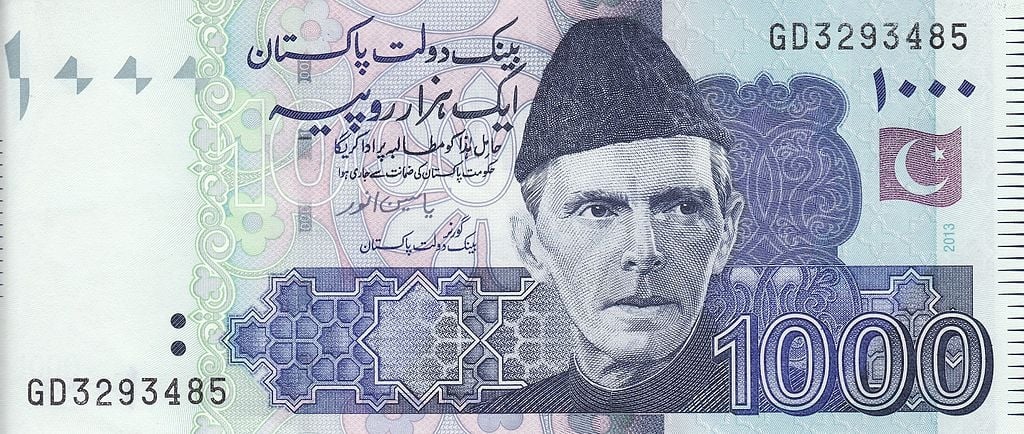
Dollar vs Pak rupee – what’s causing the drop?
In January, the Dollar vs Pak rupee was at Rs 110.7, but since then, the dollar surged to 15.6 percent, clocking an all-time high of Rs 128 on Monday. Analysts are expecting the USD to PKR to settle somewhere around 130.
The State Bank of Pakistan (SBP) notes that the recent fall in the currency is a result of the demand and supply dynamics of foreign exchange in the bank market. Stakeholders, however, are not happy with the continuous slide in the currency and believe that the situation would bring in more pain for Pakistan’s economy in the long-run.
A press release by the State Bank of Pakistan earlier this week said: “SBP is of the view that this adjustment in the exchange rate along with the increased policy rate and other administrative measures, would help contain domestic demand in general, and reduce the imbalances in the country’s external accounts in particular.”
With the continuous fall this week, the Pakistani Rupee is currently the worst performing currency in the world second only to the Turkish Lira. In fact, South Asian economies, in general, have taken a hit against the U.S. dollar in the past six months as confidence in the emerging economies continues to deplete. Some of the worst performing currencies are Turkish Lira -26.41 percent, Indonesian Rupee -6.93 percent and Indian Rupee -6.12 percent.
USD to PKR – where it is heading to?
About the Dollar vs Pak rupee, Rajiv Raipancholia, CEO of Orient Exchange, says, “The main reason for today’s fall was that State Bank of Pakistan had left rupee to market forces. The central bank is not in a position to support the rupee due to poor forex reserve, widening current account deficit and proposed IMF borrowing plan.”
Raipancholia predicts that if the trend continues, then the Pakistani Rupee could depreciate further ahead of the upcoming elections. Further, Raipancholia expects the rupee would see 35.50 to 36.00 against the dirham by the end of 2018 as the economy slows down and the upcoming elections also hint that no one party would get the absolute majority, according to Khaleej Times.
Raipancholia notes that the falling rupee, however, would bring in short-term relief for the expats. Although the decline in the currency is one of the many reasons for high inflation in the country and people will bear the burden of higher inflation in the long-term, it also means a short-term boost for expats, the expert said.
Widening CAD – a growing concern
Just last month, SBP devalued the rupee by 4 percent against the dollar, following the 10 percent depreciation in December 2017 and March of this year. Speaking to Pakistan Today, Topline Securities Research Director, Saad Hashemy, said that the devaluation in the rupee is a positive signal on the economic front to the investors, hinting that significant steps are being taken to address the swelling external account.
Rising current account deficit (CAD) of Pakistan’s external account is concerning the policy makers. The external CAD was “down during the FY18 by higher than expected,” Hashemy said. Hashemy noted that CAD would probably increase to almost $18.0 billion (5.8 percent) of GDP in the financial year 2018 from $12.6 billion (4.1 percent of GDP) last year.
Hashemy believes that such a trend is not sustainable, considering the current low-level reserves of $9.5 billion, which is less than two months of imports as of July 6, 2018. Amid such a backdrop, Hashemy expects the Dollar vs Pak rupee to hover around Rs.131 by June 2019.
Hashemy, however, added that a weaker Pakistani Rupee would be positive for the listed sectors, including oil and gas exploration, textiles, information technology and power due to dollar denominated revenues.
IMF bailout – the only option
Not all the experts are sailing on the same boat when it comes to analyzing the devaluation. There are two entirely different opinions coming in. One section of analysts believes that the current situation of the national currency would not be a problem for the market. Moreover, the self-correcting mechanism of demand and supply would ease out the prevailing market system.
On the other hand, a different section of analysts believes that the Pakistani currency is still over-valued and the fall would continue even after the elections. Some financial analysts even say that the next government would have to seek a bailout from the International Monetary Fund (IMF) due to the widening current account deficit. This, in turn, would further increase the debt in Pakistan and discourage potential investment. Also, if Pakistan continues to borrow at the same rate, it would further weaken the Pakistani economy.
The Pakistani economy is reeling under the pressure of huge trade imbalances, a rising Consumer Price Index and core inflation, and depleting forex reserves. Such a scenario has pushed the Finance Minister Dr. Shamshad Akhtar to suggest that a bailout package from IMF could be the only way out.












